For inquiries, please call 03-5848-8605 or use the chat on the bottom right.
In 2018, the mayor of Iitate Village, which suffered radiation damage in the Great East Japan Earthquake, converted the storehouse in his home into a museum of Raymond Peynet and Michel Henry.
Around 2003, we received a call from Iitate Village Mayor Sugano, who wanted to build a Peynet museum in Iitate Village and wanted a lot of Raymond Peynet prints.
At that time, our company (Galerie Adeka) ran a specialized gallery for French paintings and prints called Gallery Ving de France at Karuizawa Prince Shopping Plaza (1995-2015), and also exhibited and sold works in the corridors of the West Wing of Karuizawa Prince Hotel.
Iitate Village Mayor Kanno had attended a seminar at Karuizawa Prince Hotel about a month earlier and apparently purchased about five of Raymond Peynet's original prints that were on display at the West Wing of Karuizawa Prince Hotel. I also knew that several Raymond Peynet prints had been sold at Karuizawa Prince Hotel in the end-of-month sales report.
About two months after receiving his phone call, I met Mayor Sugano in Tokyo for lunch and heard his story. There is a place called Ai no Sawa in Iitate Village, which is a park for the villagers to relax, with a sports field, hot springs, accommodation facilities, and restaurants, centered around a small lake.
Love Bridge of Love in the Valley of Love
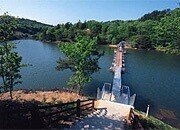
There are stones in the Love Stream that resemble male and female genitalia, which is said to be the origin of the name Love Stream. Mayor Kanno said he would like to open a museum dedicated to Peynet's lovers, named after the Love Stream. There are Peynet museums in Karuizawa and Antibes in the south of France, but he would like to build one in Iitate Village as well. The list price of Peynet's original prints is around 100,000 to 200,000 yen, so the museum can be opened at a low price.
I went to see Ai no Sawa a few months later. Mayor Kanno is a man of new ideas and execution, and has been trying various things to develop Iitate Village. The Peine Museum in Ai no Sawa is also part of the village revitalization. It's interesting, so I'd like to introduce some of Mayor Kanno's efforts.
1: Villagers' Haiku Competition: We invited Madoka Mayuzumi, a haiku poet who became famous in the 1980s when she published a collection of haiku called "Salad Anniversary," to be a judge. We held a judging meeting for haiku about rural areas and Iitate Village, which were submitted by villagers and the general public. We carved the selected haiku into stones about 30 cm high and placed several dozen of them on the walking path that goes around Ai no Sawa, so that people could enjoy haiku about rural areas while taking a walk. We also published a collection of the haiku.
Iitate Village Ainosawa Poetry Monument
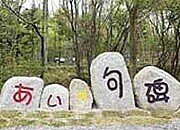
2: Wings of a Young Wife: I planned a group trip to France for the wives of farmers. I think I did it about 7 or 8 times. The young wives of farmers planned the trip to France by themselves, made the reservations by themselves, and traveled around France for about a week. Of course, they couldn't speak French, and their English wasn't very good, so they communicated with gestures during the trip. The women who participated gained confidence through the plan, and after returning home, they were active in various fields in their villages. It is worth noting that the trip was carried out during the autumn harvest season, when farmers are at their busiest. If a farmer's wife is absent during a busy time, the farmer will be in trouble, so the system recognizes the importance of the wife. It's an interesting idea. But I think it was very good that this plan was in France. In America, there is a high risk of being involved in crime, and in Italy, a man follows you every 50 meters. In France, there are gypsies and Italian street thieves, but you don't feel unsafe. There aren't many thefts in stores, restaurants, or hotels.
Mayor Sugano of Iitate Village and his wife, and Galerie Adeka's Yasuhiro Takeda, who came to see the Michel Henry exhibition in Japan.

The construction of the Museum of Love and Flowers by Peynet and Michel Henry was rejected by the Iitate Village Council in 2006, but Mayor Kanno did not give up and was waiting for an opportunity. Mayor Kanno sent me books he had written and large chunks of Iitate beef, and we had meals together when he came to Tokyo, and we became good friends.
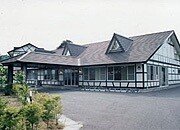
I stayed at a cottage in Iitate Village and went to the fireworks display at nearby Lake Yama and the village's summer festival. I watched the fireworks with my wife and children while stuffing my cheeks with boiled corn brought by the wife of the village mayor, Mr. Kanno. At the village festival, I enjoyed a barbecue of Iitate beef and vegetables grown in the village. I also enjoyed the haiku written by the villagers while walking around Ai no Sawa. It was fun to walk around the lake while humming the haiku written by the villagers, which were placed a few meters apart. Here are some haiku written by the villagers. There are pastoral haiku such as "A cow comes to me at the sound of a cry on an autumn evening," "A child returning home to see his father harvesting rice," and "I put my newly-wed wife on the tractor and go to the flower fields." These were selected by the haiku poet Madoka Mayuzumi, who was a judge. I also wrote a haiku and showed it to a friend who makes a living from haiku, but he said it was too straightforward and not a haiku. He said it was just like my personality. My straightforward haiku is, "Let the festival drums resound into the summer night sky." Before the fireworks were set off, festival drums were played in the light of bonfires, and I wrote this haiku about the sound of the drums rising into the pitch black night sky.
The Great East Japan Earthquake occurred on March 11, 2011. A few weeks later, I learned that Iitate Village was suffering from serious damage from radiation. When I asked Mayor Kanno if there was anything I could do, he told me that he felt the most sorry for the children and asked me to give them something as a gift. I collected donations and delivered 400 Yomiuri Giants and Rakuten goods to kindergarten and elementary school children in Iitate Village.
Gallery Adeka Takeda giving a present to a kindergarten teacher in Iitate Village
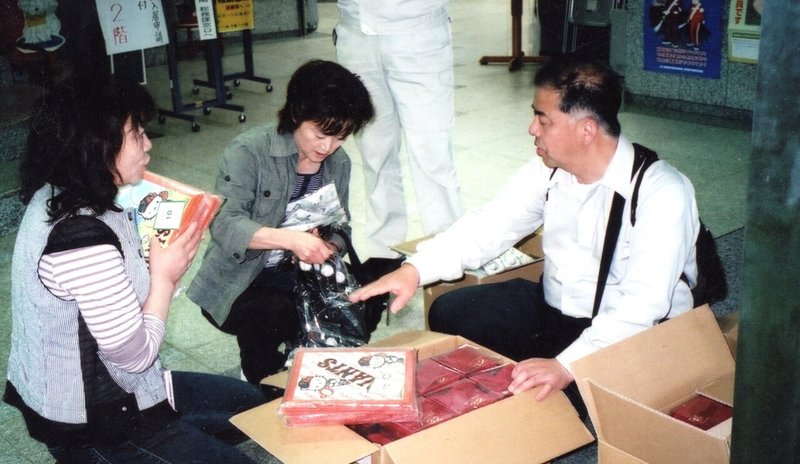
Although the order to evacuate the entire village of Iitate had not yet been issued, the children in the village's three elementary schools were studying in a borrowed school building from an elementary school in a neighboring town.
The only bookstore in Iitate Village (located right next to the town hall)
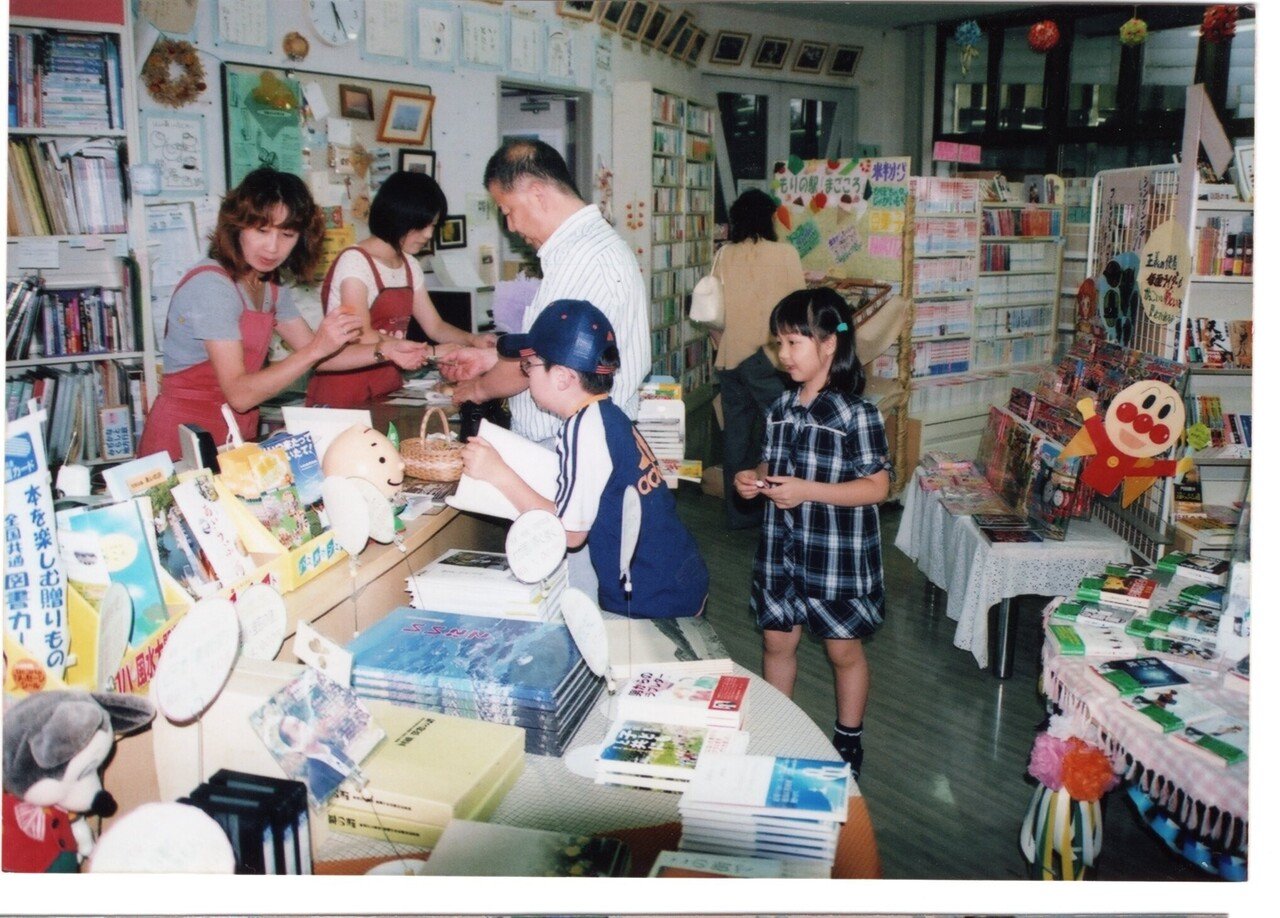
Some children commuted for more than an hour. The children were playing cheerfully. I told them, "These are difficult times, but once we overcome this situation, a wonderful future awaits us. It's difficult, but let's overcome it together." I felt like I was praying that these children would not suffer in the future. Even now, the children I met back then sometimes come to mind. I pray that they will grow up healthy. I'm sure they'll be fine, and they'll grow up healthy.
Yasuhiro Takeda delivering presents to the children of Iitate Village with the children in the classroom.

Toshihiko Sato, president of Waniplus Co., Ltd., kindly offered to publish Mayor Kanno's memoirs, and published "Radiation Falls on a Beautiful Village" in August.
After that, Mayor Sugano expressed his wish to show the children baseball in Tokyo. With the cooperation of Koishikawa Lottery Club, Yomiuri Giants, Tokyo Dome and Fujita Kanko, I organized a one-night tour to watch Yomiuri Giants games for 180 children in three separate trips in April and August 2012. The plan was to invite the children and their guardians to Tokyo Dome, visit the Yomiuri Giants museum, watch a Yomiuri Giants game, stay one night at Fujita Kanko's Washington Hotel, and then go sightseeing in Tokyo by bus the next day before returning to Iitate Village. I thought it was a plan to cheer up the children who were in a frustrating situation. I also thought it would help them feel that many people were supporting them and create a bond. I also welcomed the children and their guardians as they got off the bus at Tokyo Dome. I was really happy when I saw their bright and cheerful faces. I welcomed them with the people who helped us. Everyone was very touched.
Around 2016, people started returning to Iitate Village. When they started returning, many construction and civil engineering companies came and reconstruction began, so I thought my role was over. As part of the new village construction, Mayor Kanno renovated his own storehouse and opened the Museum of Love and Flowers by Peynet and Michel Henry.

